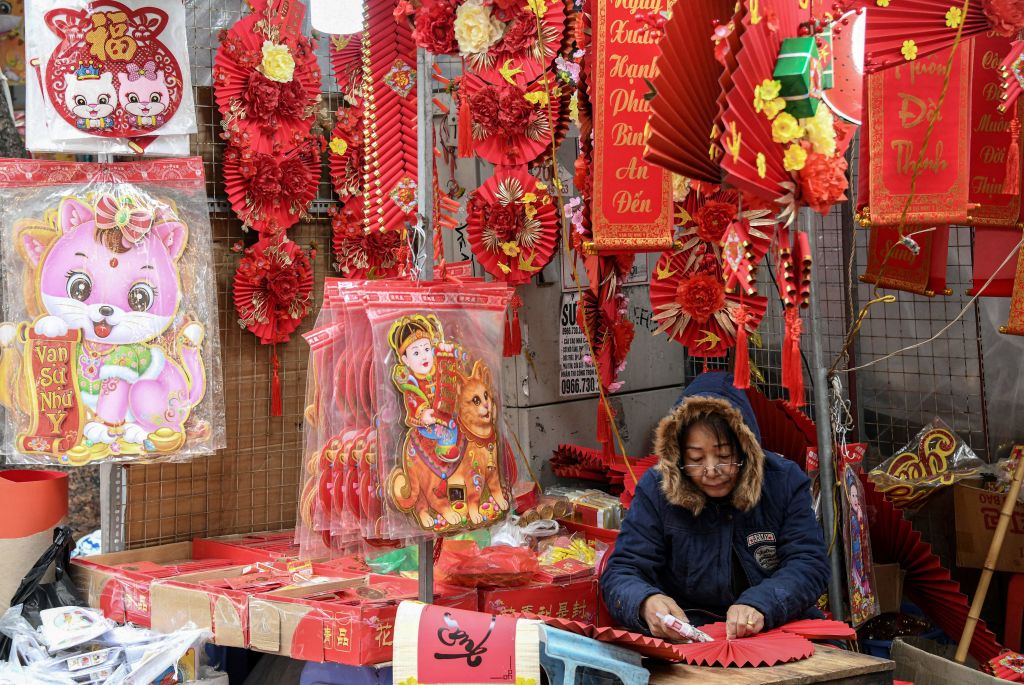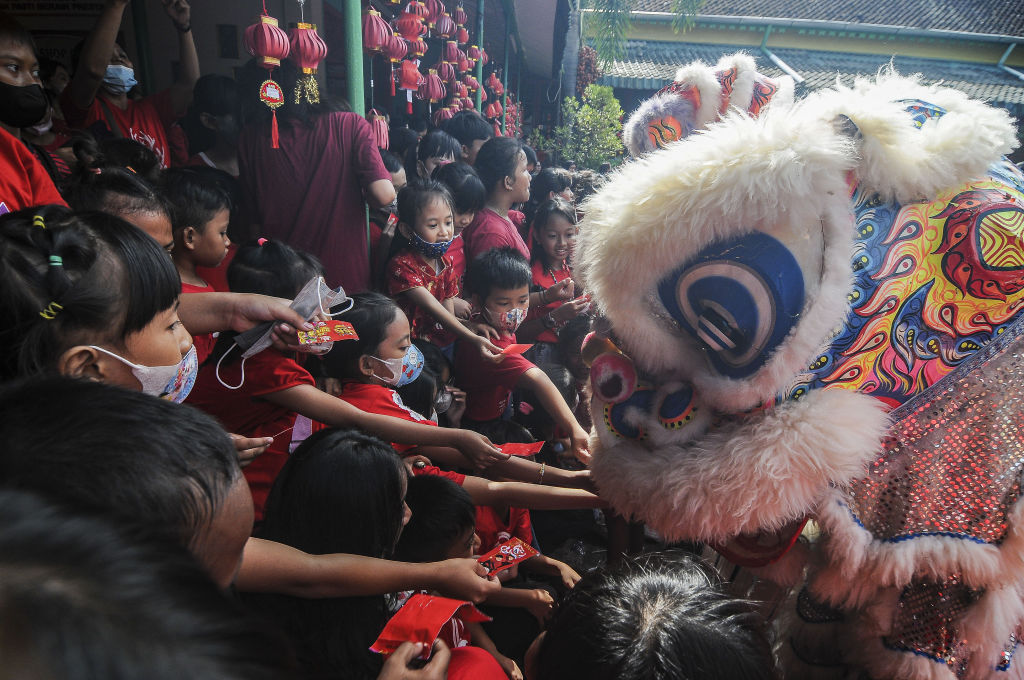
Every year, some time between late January and early February, an estimated 2 billion people across the globe, many of them in East and Southeast Asia, celebrate the Lunar New Year.
Millennia of agricultural tradition in ancient China, with farmers looking to the moon as a guide for when to sow and harvest crops, led to celebrations of the Lunar New Year. The holiday falls on the day of the second new moon after the winter solstice, marking the start of a new annual cycle based on the lunisolar calendar, and a way to welcome the beginning of spring. The next Lunar New Year begins on Jan 29, 2025.
The Lunar New Year is a public holiday that is observed across multiple days in China, North and South Korea, Malaysia, the Philippines, Indonesia, Singapore, Brunei, and Vietnam. Filial ties typically take center stage during this time as people return to their hometowns to observe the holiday with their families.
Here are five things to know about how different cultures celebrate the Lunar New Year.
The holiday generally involves travel to reunite with family
In China, the Spring Festival or chūnjié is the country’s biggest festival.
Every year, until the pandemic began, hundreds of millions of Chinese, including expats from overseas, return to their hometowns to celebrate the festival with their families. The migration is significant enough to clog transport terminals and to warrant its own moniker, chūnyun (literally “spring migration”), which lasts for 40 days.
For Koreans, Seollal (“New Year”) is a three-day public holiday that spans the day before, the day of, and the day after the Lunar New Year. During this time, celebrants typically return to their hometowns to visit family. Some Koreans may also choose to wear a traditional costume called hanbok and play traditional games such as yutnori. (With Seollal spanning from Tuesday to Thursday this year, the government decided to designate Monday, Jan. 27, as a temporary holiday.)

It’s the Year of the Wood Snake
According to the lunisolar calendar, Jan. 29 this year ushers in the Year of the Snake. There are 12 zodiac animals, each assigned a year, on a rotating basis.
The order of the rotation is based on the tale of a “Great Race” of animals staged by the Jade Emperor—a revered god in Chinese mythology. According to the legend, the animals crossed a rapidly-flowing river to get to the finish line in the following order: rat, ox, tiger, rabbit, dragon, snake, horse, goat, monkey, rooster, dog, and pig. The zodiac animals are a little different, however, in Vietnam: the ox is replaced with the water buffalo, and the rabbit with the cat.
Traditional practices like feng shui, the Chinese philosophy of managing the flow of energy in the home, are also often aligned with the Zodiac year. And being born in a specific Zodiac year is believed to dictate a person’s personality traits and annual fortunes. For instance, people born in the Year of the Snake are generally thought to be rational and calm, though they are also said to be skeptical, obstinate and possessive.
Each Zodiac year is also assigned a different material agent in Chinese philosophy (wood, fire, earth, metal, and water). Rooted in ancient Chinese cosmology, the five agents (wuxing) were believed to represent universal cycles of processes as they transition from one to the other. Each agent is also believed to represent specific virtues: wood for benevolence, fire for propriety, earth for sincerity, metal for righteousness, and water for wisdom.
This year represents the Year of the Wood Snake. Those born in 2013, 2001, 1989, 1977, and so on (every 12 years) were also born in Years of the Snake. (1965 was the last Year of the Wood Snake.) While snakes have earned a generally negative reputation in some cultures, Chinese culture has a more nuanced view. The dragon is the most important creature in Chinese mythology, and the snake is considered a “little dragon.” Nüwa, the revered goddess whom the creation of humanity is attributed to, as well as his brother Fuxi, are described to have serpentine bodies. One of the four most popular legends in China, the Legend of the White Snake, has been adapted repeatedly in theater, film, and TV.
Food plays a special role during the Lunar New Year
During the Lunar New Year, many food items are symbolic of luck and prosperity.
Several Chinese dishes are served because of how they sound—thanks to the country’s homophonic languages. For example, fish is a requirement at the Lunar New Year dinner table because in Mandarin Chinese, the word for fish (yú), sounds like the word for “surplus” (yú). Similarly, oranges are also a holiday staple because the Cantonese word for tangerine (gam) sounds like the word for ‘gold’ (gam).
Read More: What’s So Special About Mandarin Oranges During Lunar New Year?
Across many cultures, sticky rice items are considered auspicious and some are emblematic of togetherness. Vietnam’s bánh chưng is a rice cake wrapped and twined in banana leaf that is traditionally prepared together as a family. People in the Philippines, a predominantly Catholic nation with a significant Chinese population, may share tikoy, a sticky rice cake of Fujianese origin often fried in an egg batter; the stickiness also represents close filial relations. In South Korea, tteokguk, a broth with sticky rice cakes sliced into small circles, is served to represent longevity and prosperity—because the rice cakes look like coins.
During Mongolia’s Lunar New Year, which is called Tsagaan Sar and falls on March 1, 2025, one of the dishes served, tsagaalga, is a mixture of curd, rice, and raisin. Dairy is also used in many local dishes for the symbolism of its white color: to purify what’s dark, as the moon does in the night.

Elders customarily give money to young people
Lunar New Year is also often associated with giving out money.
In Chinese culture, red packets (called hongbao in Mandarin and lai see in Cantonese) containing lucky money are given out by parents to their children and elders. In the workplace, the company and upper management may give red packets to their employees.
In Vietnam, the gifted money called tiền mừng tuổi is also placed inside red envelopes to wish people success, longevity, and growth. Originally, elders give these to children, but nowadays Vietnamese people can give it to anyone regardless of age.
For Koreans, older family members will give children who do their sebae, a traditional deep bow to wish good luck in the new year, New Year’s money called sebaet don, which are given out in traditional silk bags or envelopes.
Japan has a different way of observing the Lunar New Year
Unlike China and many other countries in Asia, Japan as a society broadly doesn’t celebrate the Lunar New Year—although that wasn’t always the case.
Shortly after the Meiji restoration of 1868, which signaled a major political transformation in Japan, the country adopted the 365-day, January-to-December Gregorian calendar, placing the civil and cultural Japanese New Year on Jan. 1.
Read More: Who Decided January 1st Is the New Year?
But locals in the country’s major Chinatowns, like in Yokohama, Nagasaki, and Kobe still celebrate it, though on a much smaller scale. In Okinawa, residents refer to the holiday as Soguwachi, and families pray and offer seasonal food to Buddha. Although Japan officially adopted the Gregorian calendar, it still observes the Chinese zodiac calendar.
More Must-Reads from TIME
- Cybersecurity Experts Are Sounding the Alarm on DOGE
- Meet the 2025 Women of the Year
- The Harsh Truth About Disability Inclusion
- Why Do More Young Adults Have Cancer?
- Colman Domingo Leads With Radical Love
- How to Get Better at Doing Things Alone
- Michelle Zauner Stares Down the Darkness
Contact us at letters@time.com